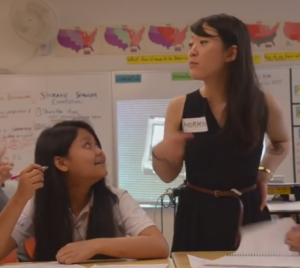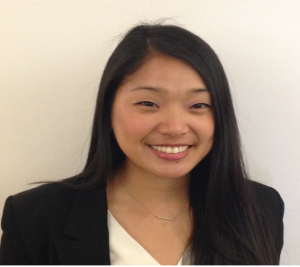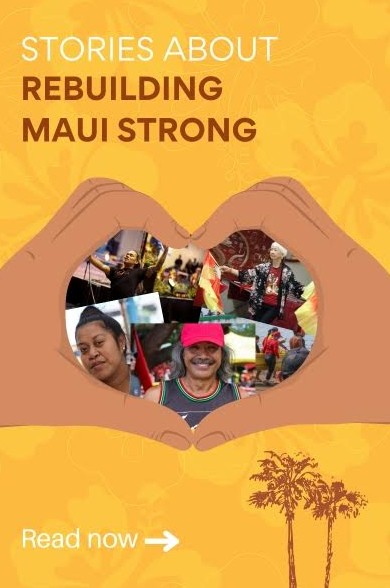 Susie Kim teaches seventh-grade history and social studies at Central Queens Academy Charter School in New York
Susie Kim teaches seventh-grade history and social studies at Central Queens Academy Charter School in New York
As an Asian American and second generation Korean American, she tries to instill in her students a sense of belonging so that they can learn to be advocates for themselves and their communities.
“It’s really important to continue to build a community of Asian American Pacific Islander educators and leaders so we can advocate for students and really change that perception about what it means to belong in America,” said Kim, a 2013 New York City Corps Member.
In the world of education, Kim is a rare asset.
Nationally, less than 1.5 percent of teachers are Asian American and Pacific Islander, according to Teach for America. The non-profit hopes to grow and inspire future leaders to further enhance the quality of education in the U.S.
That’s why just more than a year ago it launched the Asian American & Pacific Islander Initiative. In the 2014-2015 school year, 6 percent of TFA teachers identified as AAPI. That’s a significant increase from the overall national average.
“We have a long way to go to get more diverse talent into teaching, but we’re encouraged by our progress so far,” said Sarah Ha, Managing Director of the AAPI Initiative. “We’re equally proud of our work developing and supporting programs to help strengthen AAPI leaders. We executed TFA’s first-ever AAPI Corps Member Summit, our AAPI Staff Summit, and the first series of AAPI Leadership Summits for undergraduate students.”
The AAPI Initiative has made it a top priority to gain disaggregated data about Asian Americans and Pacific Islanders for both students and teachers. As educators, it hurts them that not more information is available about the more than 48 ethnicities represented in the AAPI community. It endorsed Rep Mike Honda’s (D-CA) All Students Count Act which would require state education agencies to report more enhanced, segmented data at the K-12 levels.

“The way school reporting currently works, AAPI students are too often lumped together and not allowed to identify by their ethnic communities,” said Ha. “This contributes to a narrative that combines all AAPI communities together and ignores those who need the most support.”
Regular readers of AsAmNews are well aware of the disparities in educational achievement among the different AAPI groups. A mere 34.2 percent of Cambodian high school graduates attend college and 34.5% of Laotian high school graduates attend college. More than a third of the students from both communities do not finish high school.
The Cambodian, Hmong, and Marshallese communities experiencing a poverty rate that is more than twice the national average.
The AAPI Initiative is confident increasing the pool of AAPI teachers will go a long ways in enhancing the education of these students.
“When such teachers are themselves from historically underrepresented racial backgrounds or low-income families, they have the potential to have a profound additional impact because they can be particularly persuasive with students regarding the potential for success in education and in life,” said Justin Tandingan, director of the AAPI Initiative.
Members of the AAPI Initiative launched their program after going on a listening tour of various AAPI community groups who were already working in the community. The tour culminated with a list of targeted goals for the Initiative.
• Addressing data disaggregation as a civil rights issue for the AAPI community.
• Building a robust talent pipeline of AAPI educators.
• Fostering AAPI presence in TFA leadership.
• Offering identity development opportunities to our teachers and staff.
• Building robust partnerships to help drive our work forward and increase our collective capacity to support students and communities.
• Considering the historical, social, and political context of partnerships so that we operate in anti-oppressive ways.
• Acting as an ally to other communities of color.

“We feel compelled to grow the number of AAPI leaders in classrooms and school systems to reflect the rapidly growing student population,” said Tandingan. ” Our AAPI students deserve to have teachers who share their background and can stand as examples of what is possible. But more broadly, all children can benefit from the assets of AAPI leaders, and all students lose from limited interaction with leaders from diverse cultural backgrounds – which can help to foster increased intercultural understanding in an increasingly interconnected and global climate.”
Students in Ms. Kim’s class are already seeing the difference.
“Ms. Kim has led us back into the past and shown us what struggles people that lived in America went through,” says Khadijah, one of her seventh-graders. “What she’s teaching us is that the mistakes people have made in history, we shouldn’t do them in the future, but we should be leaders and change things.”
“People are socialized to think they don’t have the power to truly change the world,” said Kim. “I wanted to work with students so that would have the skills and they would have the knowledge in order to advocate for themselves and their communities.”
You can watch Kim in action with her students in the clip below. For more information on the AAPI Initiative, go to their website.
RELATED STORIES
Asian American and Pacific Islander Students Play a Unique Role
Race & Class Impacts Students with Disabilities
All Students Count-Changing the AAPI Narrative
Asian American Pacific Islander Students Must Claim their Identities
Teach for America Launches AAPI Initiative



